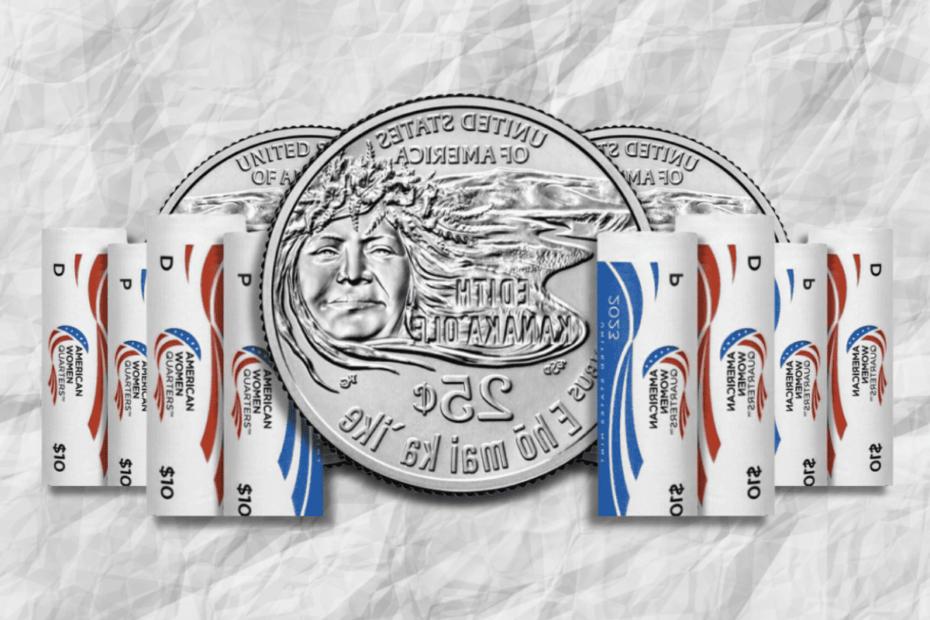Whispers of Metal: More Than Just Currency
Every quarter tells a story. As a seasoned numismatist with decades of experience, I‘ve learned that these small metallic discs are far more than mere currency – they‘re time capsules, historical documents pressed into circular form, waiting to reveal their secrets to those patient enough to listen.
When you hold a standard roll of 40 quarters, you‘re not just holding $10 worth of currency. You‘re cradling a piece of American economic and cultural history, a tangible connection to generations of monetary practices that have shaped our financial landscape.
The Unexpected Journey of a Quarter Roll
Imagine for a moment the intricate dance of machinery, human precision, and historical tradition that transforms raw metal into these standardized rolls. It‘s a process that begins deep underground in mineral-rich mountains and ends in the hands of collectors, banks, and everyday citizens.
The standard 40-quarter roll isn‘t an arbitrary number. It‘s a carefully calculated standard that emerged from decades of financial evolution. In the early 20th century, banks and financial institutions were wrestling with increasingly complex cash management challenges. The introduction of standardized coin rolls was nothing short of a financial revolution.
The Metallurgical Memoir: Quarters as Historical Artifacts
Let me share a personal story that illustrates the profound connection between these coins and our national narrative. Years ago, while examining a collection of quarter rolls from the mid-20th century, I discovered something remarkable – each roll was a microcosm of American industrial history.
Quarters minted during World War II, for instance, often used alternative metal compositions due to wartime shortages. These coins weren‘t just currency; they were direct reflections of national sacrifice and industrial adaptation. A quarter from 1943 might contain silver alloys different from those minted just a few years earlier, telling a silent story of resource allocation during global conflict.
The Unseen Complexity of Coin Production
Most people see a quarter and think, "25 cents." But as a collector, I see an intricate symphony of metallurgy, engineering, and artistic design. Modern quarter production involves sophisticated processes that would astound the average person.
The United States Mint in Philadelphia and Denver doesn‘t just stamp metal. They create miniature works of art, each coin undergoing rigorous quality control. A single quarter roll represents hundreds of individual quality checks, ensuring each coin meets exacting standards of weight, composition, and visual clarity.
Personal Treasures: The Human Side of Collecting
Coin collecting isn‘t just about monetary value. It‘s about connection – to history, to craftsmanship, to human stories. I remember a collector friend who discovered a rare 1932-D Washington quarter in an unremarkable roll purchased from a local bank. That single coin, worth thousands, represented not just financial potential but a moment of pure numismatic magic.
These moments remind us that every roll of quarters carries potential surprises. While most rolls contain standard currency, occasionally they become portals to extraordinary discoveries.
Economic Whispers: Understanding Coin Roll Significance
From an economic perspective, the standardized 40-quarter roll represents more than a convenient packaging method. It‘s a testament to financial system efficiency, allowing banks, businesses, and individuals to quickly and accurately manage currency.
The $10 face value isn‘t coincidental. It emerged from careful economic planning, representing a balance between practical handling and monetary convenience. Banks could efficiently process these rolls, reducing counting time and minimizing human error.
The Technological Evolution of Quarter Production
Modern quarter production is a marvel of technological precision. Computerized systems now monitor every stage of minting, from metal selection to final stamping. Laser-guided machinery ensures each quarter meets microscopic tolerances that would have been impossible just decades ago.
Interestingly, the composition of quarters has changed dramatically over time. What began as nearly pure silver transitioned through various alloys, ultimately landing on a copper-nickel clad composition that balances durability, cost-effectiveness, and aesthetic appeal.
Collector‘s Insights: Reading Between the Mintmarks
For the uninitiated, mintmarks might seem like random letters. But to a seasoned collector, they‘re geographical signatures telling complex stories. A quarter marked with a "D" speaks of Denver‘s mint, while an "S" whispers of San Francisco‘s rich numismatic history.
Each mintmark represents a specific production facility, carrying its own technological and historical nuances. Some years, certain mints produced fewer coins, making quarters from those locations exponentially more valuable to collectors.
Beyond Monetary Value: Cultural Significance
Quarters aren‘t just currency – they‘re cultural artifacts. The designs, particularly those commemorating national parks or significant historical figures, serve as miniature educational platforms. Each roll becomes a traveling museum, carrying stories of American heritage.
The State Quarters Program, launched in 1999, transformed public perception of coin collecting. Suddenly, quarters weren‘t just monetary units but collectible pieces of regional pride. Families began tracking and collecting quarters representing their home states, creating a nationwide numismatic phenomenon.
The Future of Coin Collecting
As digital currencies rise, some might wonder about the future of physical coin collecting. But true collectors understand that these metallic memories transcend technological trends. Quarters represent tangible connections to our past, present, and potential future.
The 40-quarter roll will likely remain a standard, a testament to the enduring nature of physical currency and the human desire to collect, preserve, and understand our shared history.
Final Reflections: A Numismatist‘s Perspective
When you next encounter a roll of quarters, pause. Look beyond the monetary value. Each coin is a story, each roll a chapter in an ongoing narrative of human economic innovation.
Remember: In the world of coin collecting, value isn‘t just measured in dollars and cents, but in the rich, intricate stories these small metallic discs carry.
